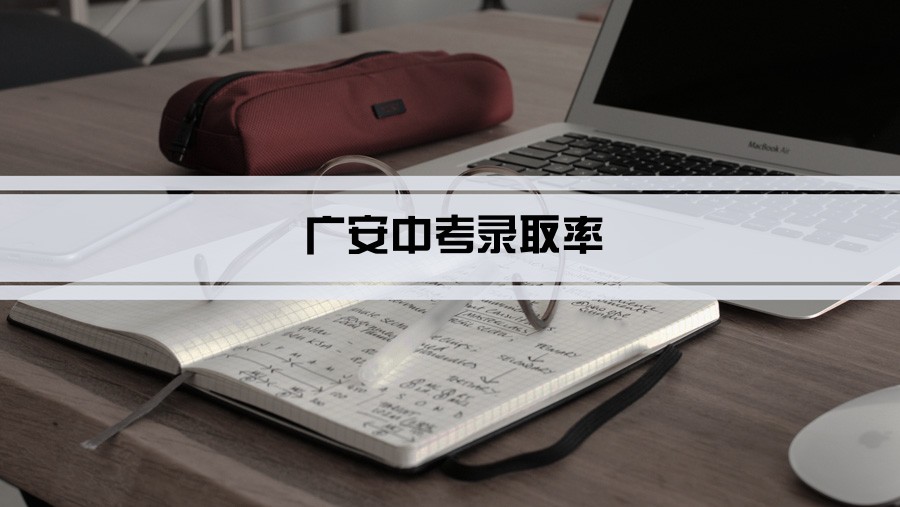-
相关文章
初中语文综合性学习活动试题及答案有什么
2023-08-18 13:59:35顺义区初中地理考点总结
2023-08-12 07:35:21北京市中考招生制度改革最新
2023-08-01 02:55:46初中政治与我国有关的制度有哪些
2023-08-12 16:36:55达州中考录取率多少,各高中录戎数线统计
2023-08-05 23:03:19
广安中考录取率多少,各高中录戎数线统计
2023-08-07 10:01:37
宜宾中考录取率多少,各高中录戎数线统计
2023-08-18 05:38:08
二年级上册数学总复习教案范文
2023-08-12 01:52:03人教版小学二年级数学上册期末复习教案文案
2023-08-15 05:53:01初中语文综合性学习活动试题及答案有什么
2023-08-18 13:59:35九年级数学中考复习资料
2023-08-10 04:58:49
中考英语语法考点
中考英语语法考点汇总
1、并列人称代词的排列顺序
1) 单数人称代词并列作主语时,其顺序为: 第二人称 -> 第三人称 -> 第一人称 you -> he/she; it -> I You, he and I should return on time. 2) 复数人称代词作主语时,其顺序为: 第一人称 -> 第二人称 -> 第三人称 we -> you -> They 注意: 在下列情况中,第一人称放在前面。 a. 在承认错误,承担责任时, It was I and John that made her angry. 是我和约翰惹她生气了。 b. 在长辈对晚辈,长官对下属说话时,如长官为第一人称, 如:I and you try to finish it. c. 并列主语只有第一人称和第三人称时, d. 当其他人称代词或名词被定语从句修饰时。 1)物主代词既有表示所属的作用又有指代作用 例如: John had cut his finger; apparently there was a broken glass on his desk. 约翰割破了手指,显而易见,他桌子上有个破玻璃杯。 物主代词有形容词性(my, your等)和名词性(mine, yours等)两种,形容词性的物主代词属于限定词。 名词性的物主代词在用法上相当于省略了中心名词的 --'s属格结构,例如: Jack's cap 意为 The cap is Jack's. His cap 意为 The cap is his. 2) 名词性物主代词的句法功能 a. 作主语,例如: May I use your pen? Yours works better. 我可以用一用你的钢笔吗? 你的比我的好用。 b. 作宾语,例如: I love my motherland as much as you love yours. 我爱我的祖国就像你爱你的祖国一样深。 c. 作介词宾语,例如: Your should interpret what I said in my sense of the word, not in yours. 你应当按我所用的词义去解释我说的话,而不能按你自己的意义去解释。 d. 作主语补语,例如: The life I have is yours. It's yours. It's yours. 我的生命属于你,属于你,属于你。 物主代词不可与 a, an, this, that, these, those, some, any, several, no, each, every, such, another, which等词一起前置,修饰一个名词,而必须用双重所有格。 公式为: a, an, this, that +名词+of +名词性物主代词。如: a friend of mine. each brother of his. 1) 列表 I-myself we-ourselves you-yourself you-yourselves she-herself he-himself they-themselves 2)做宾语 a. 有些动词需有反身代词 absent, bathe, amuse, blame, dry, cut, enjoy, hurt, introduce, behave We enjoyed ourselves very much last night. 我们昨晚玩得很开心 Please help yourself to some fish. 请你随便吃点鱼 b. 用于及物动词+宾语+介词 take pride in, be annoyed with, help oneself to sth. I could not dress (myself) up at that time. 那个时候我不能打扮我自己 注:有些动词后不跟反身代词, get up, sit-down, stand up, wake up等。 Please sit down. 请坐 3) 作表语; 同位语 be oneself: I am not myself today. 我今天不舒服 The thing itself is not important. 事情本身并不重要 4) 在不强调的情况下,but, except, for 等介词后宾语用反身代词或人称代词宾格均可 如: No one but myself (me) is hurt. 注意: a. 反身代词本身不能单独作主语。 (错) Myself drove the car. (对) I myself drove the car. 我自己开车。 b. 但在and, or, nor连接的并列主语中,第二个主语可用反身代词,特别是myself 作主语。 Charles and myself saw it. 5)第二人称作宾语,要用反身代词 You should be proud of yourself. 你应为自己感到骄傲 1)相互代词只有each other和one another两个词组 他们表示句中动词所叙述的动作或感觉在涉及的各个对象之间是相互存在的 例如: It is easy to see that the people of different cultures have always copied each other. 显而易见,不同文化的人总是相互借鉴的 2) 相互代词的句法功能: a. 作动词宾语; People should love one another. 人们应当彼此相爱。 b. 可作介词宾语; Does bark, cocks crow, frogs croak to each other. 吠、鸡鸣、蛙儿对唱。 说明:传统语法认为,相互关系存在于两个人或物之间用each other, 存在于两个以上人和物之间用one another。现代英语中,两组词交替使用的实例也很多,例如: He put all the books beside each other. 他把所有书并列摆放起来。 He put all the books beside one another. 他把所有书并列摆放起来。 Usually these small groups were independent of each other. 这些小团体通常是相互独立的。 c. 相互代词可加-'s构成所有格,例如: The students borrowed each other's notes. 学生们互借笔记。
6、指示代词
1) 指示代词分单数(this / that)和复数(these / those)两种形式,既可作限定词又可做代词 例如: 单数复数 限定词:This girl is Mary.Those men are my teachers. 代词: This is Mary. Those are my teachers. 2) 指示代词的句法功能 a. 作主语 This is the way to do it. 这事儿就该这样做 b. 作宾语 I like this better than that. 我喜欢这个甚至那个 c. 作主语补语 My point is this. 我的观点就是如此 d. 作介词宾语 I don't say no to that. 我并未拒绝那个 There is no fear of that. 那并不可怕 说明1: 指示代词在作主语时可指物也可指人,但作其他句子成分时只能指物,不能指人,例如: (对)That is my teacher. 那是我的老师。( that作主语,指人) (对)He is going to marry this girl. 他要和这个姑娘结婚。(this作限定词) (错)He is going to marry this. (this作宾语时不能指人) (对)I bought this. 我买这个。(this指物,可作宾语) 说明2: That和those可作定语从句的先行词,但this和 these不能,同时,在作先行词时,只有those可指人,试比较: (对) He admired that which looked beautiful. 他赏外表漂亮的东西。 (对) He admired those who looked beautiful. 他赏那些外表漂亮的人。(those指人) (错) He admired that who danced well. (that作宾语时不能指人) (对) He admired those who danced well. 他赏跳舞好的人。(those指人) (对) He admired those which looked beautiful. 他赏那些外表漂亮的东西。(those指物) 1) 关系代词用来引导定语从句。它代表先行词,同时在从句中作一定的句子成分 例如:The girl to whom I spoke is my cousin. 跟我讲话的姑娘是我表妹。 (该句中whom既代表先行词the girl,又在从句中作介词to的宾语。) 2) 关系代词有主格,宾格和属格之分,并有指人与指物之分。在限定性定语从句中,that 可指人也可指物 见表: 限定性 非限定性限定性 指 人 指物 指人或指物 主 格 who which that 宾 格 whomthat that 属 格 whose of which/whose of which/whose 例如: This is the pencil whose point is broken. 这就是那个折了尖的铅笔。 (whose 指物,在限定性定语从句中作定语) He came back for the book which he had forgotten. 他回来取他丢下的书。 (which指物,在限定性定语从句中作宾语,可以省略) 3) 关系代词which的先行词可以是一个句子,例如: He said he saw me there, which was a lie. 他说在那儿看到了我,纯属谎言。 说明: 关系代词that在从句中作宾语或表语时可省略, 例如: I've forgotten much of the Latin I once knew. 我过去懂拉丁语,现在大都忘了。 He's changed. He's not the man he was. 他变化很大,已不是过去的他了。 1)不定代词有 all , both, every, each, either, neither, more, little, few, much, many, another, other, some, any , one, no 以及some, something, anything, everything, somebody, someone, anybody, anyone, nothing , nobody, no one, none, everybody, everyone.等。 2)不定代词的功能与用法 a. 除every 和no外不定代词既可用作名词,也可用作形容词。every和no在句中只能作定语。 I have no idea about it. b. all 都,指三者以上。 all 的主谓一致:all的单复数由它所修饰或指代的名词的单复数决定。 All goes well. 一切进展得很好。 all 通常不与可数名词单数连用,如:不说 all the book,而说 the whole book。 但all可与表时间的可数名词单数连用,如 all day,all night,all the year; 但习惯上不说 all hour,all century。 all还可以与一些特殊的单数名词连用,如 all China, all the city, all my life, all the way 3)both都,指两者 a. both 与复数动词连用,但 both… and…可与单数名词连用。 b. both, all 都可作同位语,其位置在行为动词前, be 动词之后。如果助动词或情态动词后面的实义动词省 去,则位于助动词或情态动词之前。 Who can speak Japanese?We both (all) can. 4)neither两者都不 a. neither作主语时,谓语动词用单数。 b. 作定语与单数名词连用,但neither… nor 用作并列连词,可与复数名词连用。其谓语采用就近原则。 c. 可用于下列句型,避免重复。 She can't sing,neither (can) he. neither 与nor d. 如前句是否定式从句,则主句用neither,而不用 nor。 If you don't do it,neither should I. 如果你不干,我也不干。 e. 如后连续有几个否定句式,则用nor,不用neither。 He can't sing,nor dance,nor skate.
9、none,few,some,any,one,ones
一、 none 无 1) none作主语,多与of 构成短语 none of。 在答语中,none可单独使用。 Are there any pictures on the wall? None. 2) none作主语,谓语动词单复数均可。但如做表语,则其单复数与表语一致。 It is none of your business. 二、few 一些,少数 few 作主语时,谓语动词用复数,多用于肯定句。 三、some 一些 1) 可与复数名词及不可数名词连用。 2) 当做"某一"解时,也可与单数名词连用。(= a certain) You will be sorry for this some day. 总有一天,你会后悔这件事的。 A certain (some) person has seen you break the rule. 某些人不同意你的看法。 注意: (1)在肯定疑问句中用some代替any。 (2)some用于其他句式中: a. 肯定疑问句中:说话人认为对方的答案会是肯定的,或期望得到肯定回答时。 Would you like句式中,表委婉请求或建议,如: Would you like some coffee? b. 在条件状语从句中表示确定的意义时,如: If you need some help,let me know. c. some位于主语部分, Some students haven't been there before. d. 当否定的是整体中的部分时,some可用于否定句。如: I haven't heard from some of my old friends these years. 这些年我没有收到一些老朋友的信。 四、any 一些 any 多用于否定句和疑问句和条件状语从句中。 当句中含有任何的意思时,any可用于肯定句。 Here are three novels. You may read any. 这有三本小说,你可任读一本 五、one, ones 为复数形式 ones必须和形容词连用。如果替代的名词时无形容词在前,则用some, any,而不用ones。 Have you bought any rulers? Yes,I 've bought some. one表示泛指,that和it 表示特指。that与所指名词为同类,但不是同一个,而it 与所指名词为同一个。 I can't find my hat. I think I must buy one. (不定) 我找不到我的帽子了。我想我该去买一顶。 The hat you bought is bigger than that I bought. (同类但不同个) 你买的那顶帽子比我买的大。 I can't find my hat. I don' t know where I put it. ( 同一物) 我找不到我的帽子。我不知道我把它放在哪了。 one… the other 只有两个 some… the others 有三个以上 one… another,another… some… others,others… others = other people/things the others = the rest 剩余的全部 1) 泛指另一个用another。 2) 一定范围内两人(物),一个用one,另一个用the other。 3) 一定范围内三者,一个用one,另一个用one (another),第三个可用the other,a third。 4) 一定范围内,除去一部分人/物,剩余的全部用the others。 5) 泛指别的人或物时,用others当在一定范围内,除去一部分后,剩余部分但不是全部时,也用others。 1.anyone 和 any one anyone仅指人,any one既可指人,也可指物 2.no one 和none a) none 后跟of短语,既可指人又可指物,而no one只单独使用,只指人。 b) none 作主语,谓语动词用单,复数均可,而no one作主语谓语动词只能是单数。 None of you could lift it. 你们中没有人可举起它。 ---- Did any one call me up just now? --刚才有人打电话给我吗? ---- No one. --没有。 3.every 和each 1) every 强调全体的概念, each强调个体概念。 Every student in our school works hard. 我们学校的学生都很用功。 Each student may have one book.. 每个学生都可有一本书。 2) every 指三个以上的人或物(含三个),each指两个以上的人或物 (含两个)。 3) every 只作形容词,不可单独使用。each可作代词或形容词。 Every student has to take one. Each boy has to take one. Each of the boys has to take one. 4) every不可以作状语,each可作状语。 5) every 有反复重复的意思,如 every two weeks等; each没有。 6) every 与not 连用,表示部分否定; each 和not连用表示全部否定。 Every man is not honest. 并非每个人都诚实。 Each man is not honest. 这儿每个人都不诚实。 这些词都可用作代词或形容词。其位置都在be 动词之后,行为动词之前或第一助动词之后。 1) both (两者都),either(两者中任何一个), neither (两者都不) 以上词使用范围为两个人或物 Neither of the two boys is clever. 两个男孩都不聪明。 2) both,either both与复数连用,either与单数连用。 Both the boys are clever. 两个男孩都很聪明。 Either of the two boys is clever. 两个男孩都很聪明。 There are flowers on both sides of the street. (两岸) There are flowers on either side of the street. (岸的两边) 路边长满了野花。 3) all (所有的,全部的人或物),any (任何一个), none (都不) 以上词使用范围为三者以上 All the flowers are gone. 所有的花都谢了。 I don't like any of the flowers. 这些花我都不喜欢。 I like none of the flowers. 这些花我都不喜欢。 注意:all与none用法一样。跟单数名词,用单数动词;跟复数名词,用复数动词。 All of the students are there. 所有的学生都在那。 All (of) the milk is there. 所有的牛奶都在那。 (a) few + 可数名词, (a) little + 不可数名词 a few / a little 为肯定含义,还有一点 few / little 为否定含义,没有多少了。 He has a few friends. 他有几个朋友。 He has few friends. 他几乎没有朋友。 We still have a little time. 我们还有点时间。 There is little time left.几乎没剩下什么时间了。 典型例题: Although he 's wealthy,he spends___ on clothes. A. little B. few C. a little D. a few 答案: A. spend所指的是钱,不可数,只能用little或 a little. 本句为although引导的让步状语从句,由句意知后句为否定含义,因此应用little表示几乎不。 固定搭配: only a few (=few) not a few (=many) quite a few (=many) many a (=many) Many books were sold. Many a book was sold. 卖出了许多书。 形容词修饰名词,说明事物或人的性质或特征。通常,可将形容词分成性质形容词和叙述形容词两类,其位置不一定都放在名词前面。 1)直接说明事物的性质或特征的形容词是性质形容词 它有级的变化,可以用程度副词修饰,在句中可作定语、表语和补语。 例如:hot 热的 2)叙述形容词只能作表语,所以又称为表语形容词 这类形容词没有级的变化,也不可用程度副词修饰。大多数以a开头的形容词都属于这一类。 例如:afraid 害怕的。 (错) He is an ill man. (对) The man is ill. (错) She is an afraid girl. (对) The girl is afraid. 这类词还有: well,unwell,ill,faint,afraid,alike,alive,alone,asleep,awake 等。 3)形容词作定语修饰名词时,要放在名词的前边 但是如果形容词修饰以-thing为字尾的词语时,要放在这些词之后,例如: something nice 用形容词表示类别和整体 某些形容词加上定冠词可以泛指一类人,与谓语动词的复数连接。 如:the dead,the living,the rich,the poor,the blind,the hungry The poor are losing hope. 有关国家和民族的形容词加上定冠词指这个民族的整体,与动词的复数连用 the British,the English,the French,the Chinese. The English have wonderful sense of humor. 注:多个形容词修饰名词时,其顺序为: 限定词--数词--描绘词--(大小,长短,形状,新旧,颜色) --出处--材料性质,类别--名词
初中英语考点梳理之句子:疑问句与感叹句
一、一般疑问句:
(1)一般疑问句的肯定形式
一般疑问句一般是指以助动词、情态动词、be动词或have(有)开始,通常要求以yes,或no来回答的疑问句,一般疑问句读时通常用升调。
Do you know Mr. Smith? 你认识史密斯先生吗?
Can you swim? 你会游泳吗?
(2)一般疑问句的否定结构
① 在一般疑问句的否定结构中,把副词not放在一般疑问句的主语之后。但如果用not的简略形式-n’t,则须将-n’t与一般疑问句句首的be, have,助动词或情态动词写在一起。在实际运用中,一般都采用简略式。
② 与汉语不同的是,英语一般疑问句否定结构的答语是否定还是肯定,全由答语的否定或肯定来决定。若答语是肯定的,则用yes加肯定结构;若答语是否定的,则用no加否定结构。
Aren’t you a football fan? 你不是足球迷吗?
Yes, I am. 是的,我是。
No, I am not. 不,我不是。
Won’t she like it? 她会不喜欢吗?
Yes, she will. 是的,她会(喜欢)的。
No, she won’t. 不,她不会(喜欢)的。
二、特殊疑问句
用疑问代词疑问形容词或疑问副词引导的疑问句叫特殊疑问句。特殊疑问句不能用yes或no回答,读时用降调。
常见的疑问代词有what, which, who, whom, whose
常见的疑问形容词有what, which, whose
常见的疑问副词有when, where, why, how
三, 选择疑问句:
选择疑问句是说话者提出两种或两种以上的不同情况,让对方选择回答的疑问句。其结构是“疑问句+选择部分”。选择部分由or连接,or前面的部分读升调,or后面的部分读降调。
选择疑问句不能用yes或no回答,而必须具体的选择答复。
Is your bag yellow or black? It’s black.。
Would you like some tea or coffee? Either will do.。
Which do you like better, singing or dancing? I like dancing better.
初中英语考点梳理之句子
四, 反意疑问句:
反意疑问句是指在陈述句之后附加一个意思与之相反的简短问句,问对方是否赞同的疑问句。附加问句的否定式必须缩写。
(1)肯定的陈述句后跟否定的附加问句,否定的陈述句后跟肯定的附加问句。
I am your teacher, aren’t I? 我是你的老师,对吗?
He didn’t study hard, did he? 他学习不努力,对吗?
(2)如果陈述句中含有否定副词never(从不,决不),hardly(几乎不)或其他表示否定代词或形容词,如nothing, none no one, nobody, neither, few, little等,则附加问句只能用肯定式。如:
They hardly write to each other, do they? 他们几乎不给对方写信,是吗?
He has found nothing, has he? 他什么也没有找到,是吗?
Few people knew the secret, did they? 很少有人知道这个秘密,是吗?
(3)当反意疑问句是“否定陈述句+肯定附加问句”时,英语与汉语的回答习惯存在差异。英语回答时只看实际情况,若答语的具体内容是肯定的就用“Yes+肯定结构”,答语的具体内容是否定的就用“No+否定结构”,而译成汉语时,则必须把yes译“不是”,把no译成“是的”。
You won’t be away for long, will you?你不会离开太久,是吗?
Yes, I will.不,我会离开很久。 No, I won’t.是的,我不会离开很久。
I don’t think she’ll come by bike, will she?我认为她不会骑自行车,会吗?
Yes, she will.不,她会骑自行车来。 No, she won’t.是的,她不会骑自行车来。
五,掌握由what, how引导的感叹句的构成形式、用法及区别
感叹句是表示喜、怒、哀、乐以及惊异等感情的句子。句末用感叹号“!”,读时用降调,感叹句往往由what或how引导,what修饰名词,how修饰形容词,副词或动词。
1. what引导的感叹句:
(1)what + a/an +形容词+单数可数名词+陈述句(主语+谓语)
What a beautiful city it is!多么美丽的一个城市啊!
What an interesting story she told!她讲了一个多么有趣的故事啊!
(2)what+形容词+复数可数名词/不可数名词+陈述句(主语+谓语)
What expensive watches they are!多贵的手表啊!
What terrible weather it is!多么恶劣的天气啊!
三种从句的知识点
1三种从句的知识点
1.宾语从句
在复合句中,由一个句子充当宾语,这个句子叫做宾语从句。宾语从句主要有三种类型,分别是that引导的宾语从句、if或whether引导的宾从、连接代词和连接副词引导的宾语从句。常见的宾语从句引导词:that、if、whether、what、who、where、why和how。
2.定语从句
定语从句在中考和高考中出现的频率都非常高。在复合句中,修饰名词或代词的从句叫定语从句。被修饰的名词或代词叫先行词。定语从句一般放在先行词的后面。常见的关系代词包括that,which,who(宾格whom,所有格whose),as等,关系副词包括where,when,why等。
3.状语从句
状语从句就是由一个句子在复合句中充当状语。所以状语从句又可以分为时间状语从句、地点状语从句、原因状语从句、目的状语从句、结果状语从句等等。每种状语从句都有特定的引导词:
地点状语从句:where,wherever
时间状语从句:when, while, as, before, until, till, since
原因状语从句:because, since,as, now that, not that…, but that…, seeing that, considering that, in that
目的状语从句:so, so that, in order that, that, to the end that, in case,for fear that,lest
结果状语从句:so...that, such that, so that, with the result that
方式状语从句:as, as if, as though
让步状语从句:though, although, as, even if, even though, whether, no matter whether...or, no matter with
比较状语从句:as...as, not as/so...as, than, the more...the more...











